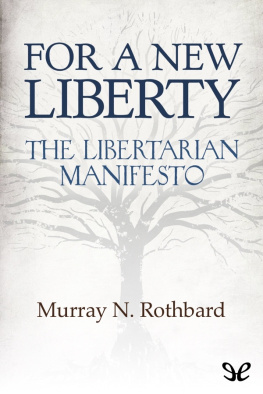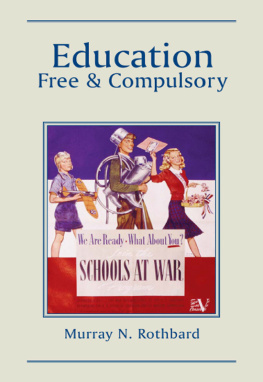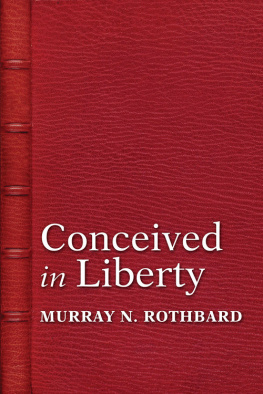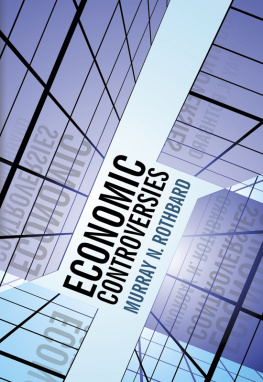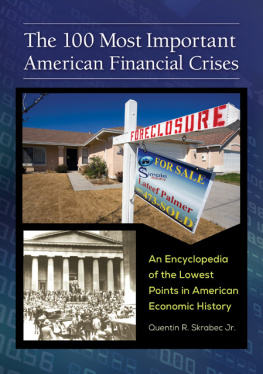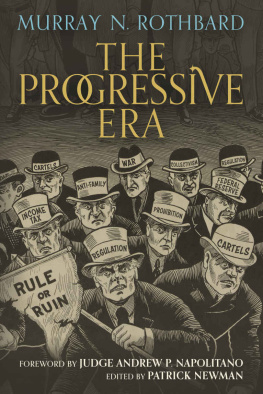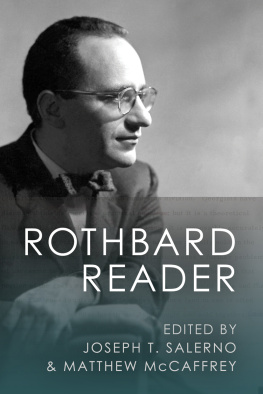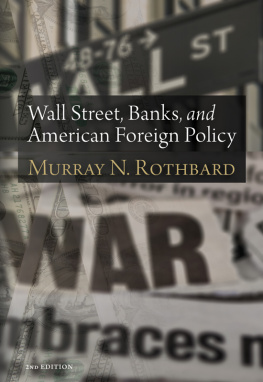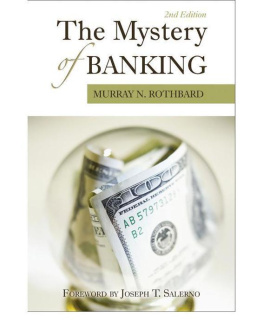The Ludwig von Mises Institute dedicates this volume to all of its generous donors and wishes to thank these Patrons, in particular:
William P. Weidner

Douglas E. French and Deanna Forbush
Mr. and Mrs. R. Nelson Nash

Floy M. Johnson
Randolph D. Love

Anonymous
John Hamilton Bolstad
Roman J. Bowser
William H. Conn
Carl S. Creager
Kerry E. Cutter
Mr. and Mrs. Jeremy S. Davis
Lee A. Everhart
Richard J. Kossmann, M.D.
Hugh E. Ledbetter
Joe R. Lee
Arthur L. Loeb
Joseph Edward Paul Melville
Stephen W. Modzelewski
Mr. and Mrs. William G. Paul, Jr.
James M. Rodney
Sheldon Rose
Thomas S. Ross
Mr. and Mrs. Joseph P. Schirrick
Raleigh L. Shaklee/Richard Shaklee Memorial Foundation
James R. Stevens
top dog
Dr. Thomas L. Wenck
Jerry K. Williams
W.W. Wood
Mr. and Mrs. Walter Woodul III

Nicholas A. Cotsidas
Mr. and Mrs. Wilfried A. Puscher
D. Allen and Sandra R. Dalton
THE PANIC OF 1819
REACTIONS AND POLICIES
MURRAY N. ROTHBARD


Copyright 1962 by Columbia University Press
Copyright 1973 by AMS Press
Copyright 2007 by Ludwig von Mises Institute
All rights reserved. No part of this book may be reproduced in any manner whatsoever without written permission except in the case of reprints in the context of reviews. For information write the Ludwig von Mises Institute, 518 West Magnolia Avenue, Auburn, Alabama 36832.
ISBN 10: 1-933550-08-2
ISBN 13: 978-1-933550-08-4
CONTENTS
Appendices
PREFACE
The Panic of 1819 was Americas first great economic crisis and depression. For the first time in American history, there was a crisis of nationwide scope that could not simply and directly be attributed to specific dislocations and restrictionssuch as a famine or wartime blockades. Neither could it be simply attributed to the machinations or blunders of one man or to one upsetting act of government, which could be cured by removing the offending cause. In such a way had the economic dislocations from 180815 been blamed on Mr. Jeffersons Embargo or Mr. Madisons War. In short, here was a crisis marked with strong hints of modern depressions; it appeared to come mysteriously from within the economic system itself. Without obvious reasons, processes of production and exchange went awry.
Confronted with a new, vital phenomenon, Americans looked for remedies and for understanding of the causes, the better to apply the remedies. This epoch of American history is a relatively neglected one, and a study of the search for remedies presents an instructive picture of a people coming to grips with the problems of a business depression, problems which, in modified forms, were to plague Americans until the present day.
The 181921 period in America generated internal controversies and furnished a rich economic literature. The newspapers in particular provide a relatively untapped vein for study. The leading editors were sophisticated and influential men, many of them learned in economics. The caliber of their editorials was high and their reasoning keen. The newspaper editors constituted, in fact, some of the leading economists of the day.
The depression galvanized the press; even those papers that had been wholly devoted to commercial advertisements or to partisan political squabbles turned to writing and arguing about the hard times.
In order to provide the setting for the discussion of remedial proposals, Chapter I presents a sketch of the economy and of the events of the postwar period. The postwar boom and its culmination in the crisis and depression are also set forth. In addition to its major function of indicating the economic environment to which the people were reacting, this chapter permits us to decide to what extent the depression of 181921 may be considered a modern business-cycle depression.
The bulk of the work deals with the remedial proposals themselves, and the speculations, controversies, and policies arising from them. Arguments were especially prevalent over monetary proposals, debtors reliefoften tied in with monetary schemesand a protective tariff. At the start of the depression each of these problems was unsettled: the tariff question was not resolved; the monetary system was new and troublesome. But the depression greatly intensified these problems, and added new aspects, and made solutions more pressing.
This book would never have come into being without the inspiration, encouragement, and guidance of Professor Joseph Dorfman. I am also indebted to Professors Robert D. Cross, Arthur F. Burns, and Albert G. Hart for many valuable suggestions.
_______________
W.R. Scott found that early business crises in Englandin the sixteenth and seventeenth centurieswere attributable to specific acts of government rather than to the complex economic causes that marked modern depressions. W.R. Scott, The Constitutions and Finance of English, Scottish, and Irish Joint-Stock Companies to 1720 (Cambridge, Mass.: Cambridge University Press, 1912), pp. 46567.
Very little work has been done on the Panic of 1819, either on its events or on contemporary opinion and policies. Samuel Reznecks pioneering article dealt largely with Niles Register and the protectionist controversy. William E. Folzs unpublished dissertation was devoted mainly to a description of the events of the pre-Panic period, especially in the West. Thomas H. Greers useful article dealing with the Old Northwest overemphasized the traditional sectional and class version of debtors relief controversies, in which the West was considered to be almost exclusively in favor of debtors relief and the East opposed. Samuel Rezneck, The Depression of 18191822: A Social History, American Historical Review 49 (October 1933): 2847; William E. Folz, The Financial Crisis of 1819A Study in Post-War Economic Readjustment (unpublished Ph.D. dissertation, University of Illinois, 1935); Thomas H. Greer, Economic and Social Effects of the Depression of 1819 in the Old Northwest, Indiana Magazine of History 49 (September 1948): 22743.
I
THE PANIC AND ITS GENESIS:
FLUCTUATIONS IN
AMERICAN BUSINESS 181521
The War of 1812 and its aftermath brought many rapid dislocations to the young American economy. Before the war, America had been a large, thinly populated country of seven million, devoted almost exclusively to agriculture. Much cotton, wheat, and tobacco were exported abroad, while the remainder of the agricultural produce was largely consumed by self-sufficient rural households. Barter was extensive in the vast regions of the frontier. Commerce was largely devoted to the exporting of agricultural produce, which was generally grown close to river transportation. The proceeds were used to import desired manufactured products and other consumer goods from abroad. Major export products were cotton and tobacco from the South, and grain from the West. New York City was becoming the nations great foreign trade center, with Philadelphia and Boston following closely behind.


